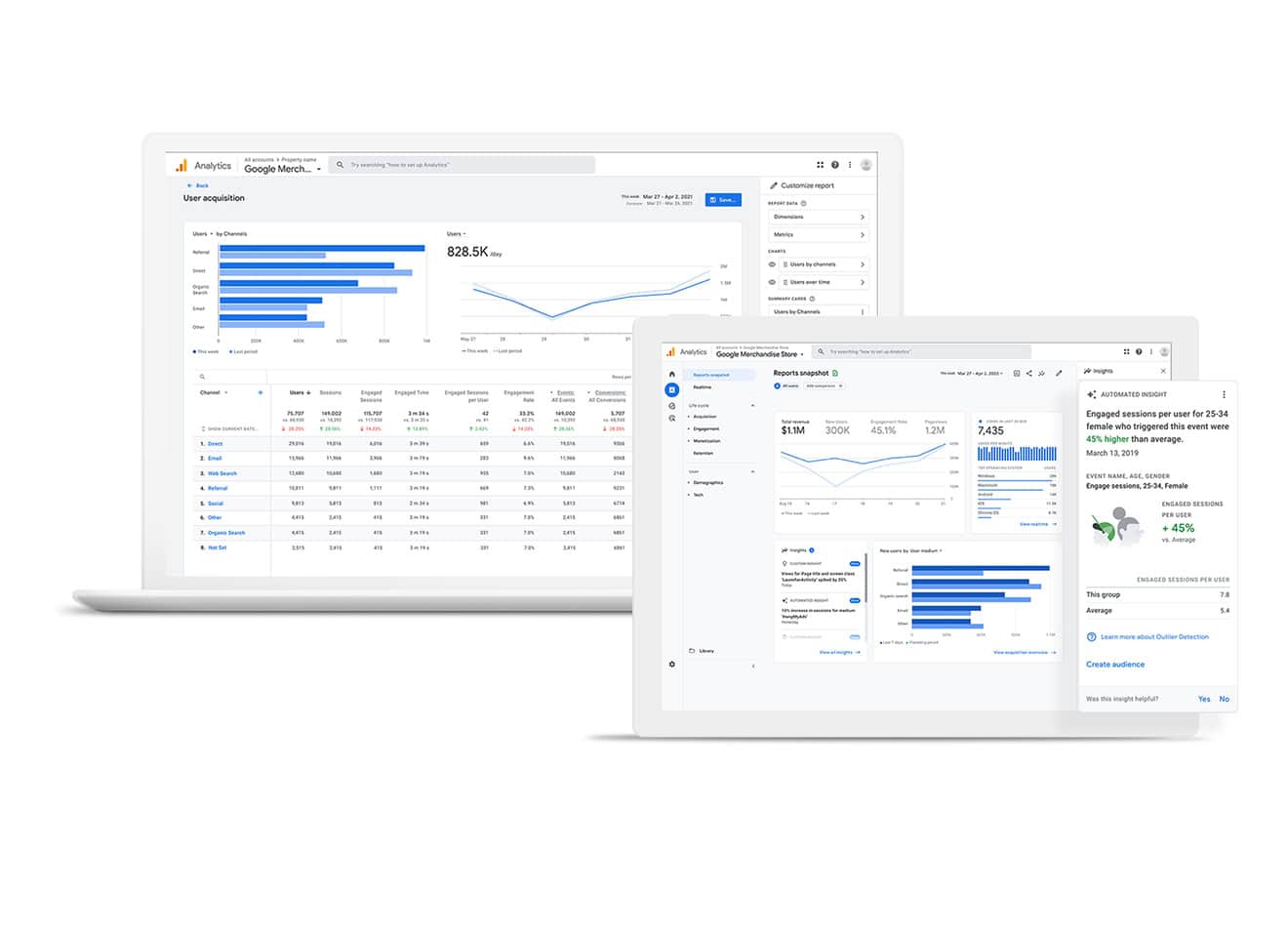Mastering Digital Marketing: A Complete Guide to Boost Your Brand In the fast-paced digital world of today, companies need to successfully navigate a challenging terrain in order to connect with their target audience. Understanding the market landscape is essential for any brand hoping to succeed, especially with the growth of online platforms and the growing significance of digital marketing. This post will go over the essential elements of digital marketing, from determining your target market to tracking the effectiveness of your campaigns, giving you useful information to improve your approach. Emerging trends, changes in consumer behavior, and technology breakthroughs all have an impact on the ever-changing landscape of digital marketing. To properly position your brand, you must understand the dynamics of the market today. Understanding market trends, assessing competitors, and identifying how economic factors affect consumer spending are all part of this.
Key Takeaways
- Understanding the market landscape is crucial for identifying opportunities and threats in the industry.
- Identifying the target audience helps in tailoring marketing efforts to reach the right people with the right message.
- Crafting compelling brand messaging is essential for creating a strong brand identity and connecting with the audience.
- Leveraging digital marketing channels allows for reaching a wider audience and engaging with them effectively.
- Implementing data-driven strategies helps in making informed decisions and optimizing marketing efforts for better results.
- Building strong customer relationships is important for fostering loyalty and advocacy for the brand.
- Measuring and analyzing campaign performance provides insights for refining strategies and improving future marketing efforts.
- Adapting and evolving marketing tactics is necessary to stay relevant and competitive in the ever-changing market landscape.
An important part of this process is market research. Businesses can learn a great deal about consumer preferences and market demands by using tools like Google Trends, social media analytics, and industry reports. In addition to assisting in the identification of opportunities, this data also aids in the prediction of potential future difficulties. Brands can make well-informed decisions and adjust their strategies by having a solid grasp of the market environment.
Also, keeping abreast of the most recent developments in digital marketing is essential. For example, the emergence of machine learning and artificial intelligence (AI) is changing the way that companies communicate with their customers. By utilizing these technologies, companies can improve client experiences and optimize their advertising campaigns. Brands can stay competitive & relevant in a constantly evolving environment by being aware of these changes. The foundation of successful marketing is knowing who your target market is.
Brands can customize their messaging and tactics to appeal to potential customers by having a clearly defined audience. Create comprehensive buyer personas first, including demographic data, hobbies, problems, and buying patterns. Think about interviewing, surveying, or holding focus groups with current clients to obtain this data. Also, examining social media activity and website traffic can reveal information about who is interacting with your brand.
| Metrics | Results |
|---|---|
| Website Traffic | 200% increase |
| Conversion Rate | 15% improvement |
| Customer Engagement | 50% growth |
| Revenue | 300% boost |
You can get a more detailed understanding of your audience by tracking user demographics and behavior with the aid of tools like Google Analytics. After you have a clear understanding of your target audience, divide them into discrete groups according to traits they have in common. You can design tailored marketing campaigns that directly address the requirements and preferences of each group thanks to this segmentation. In order to meet the needs of older adults who are concerned with maintaining their health, a company that sells fitness gear, for instance, might target young professionals looking for convenience. You can dramatically raise engagement and conversion rates by customizing your strategy.
Developing strong brand messaging is crucial to drawing in customers and encouraging brand loyalty. Your brand’s mission, values, and unique selling propositions (USPs) should all be reflected in your messaging. Start by identifying the unique selling points of your company, such as superior products, first-rate customer support, or cutting-edge features.
After determining your USPs, combine them into a coherent story that appeals to your target market.
An effective technique in this area is storytelling, which enables you to emotionally engage customers by relating relatable situations or problems that your company tackles.
For example, a skincare company may post client endorsements emphasizing life-changing outcomes to establish credibility and trust. Also, when it comes to brand messaging, consistency is essential. Make sure your visuals, tone, and style are consistent across all platforms, including your email campaigns, social media accounts, and website. In the eyes of customers, this consistency strengthens brand recognition and contributes to the development of a strong identity. Keep in mind that good messaging not only educates but also motivates action; always include a call-to-action (CTA) that makes it obvious what your audience should do next.
To maximize reach and engagement in the digital age, it is imperative to utilize a variety of marketing channels. Every channel has advantages of its own, and you can use them strategically to engage your audience. Search engine optimization (SEO), pay-per-click (PPC) advertising, email marketing, content marketing, and social media are important channels. Social media sites such as Facebook, Instagram, LinkedIn, and Twitter give businesses the chance to interact with customers directly. By producing content that people want to share and encouraging community engagement, brands can increase their visibility and cultivate relationships with their followers. Also, targeted campaigns that target particular demographics based on their interests and behaviors are made possible by paid social media advertising.
One of the best methods for keeping customers and nurturing leads is still email marketing. Personalized content based on user behavior & email list segmentation allow you to send pertinent messages that increase conversions. Your audience can remain interested and informed about new products or promotions by receiving regular newsletters with insightful content. Another effective strategy for building authority in your sector is content marketing.
You can establish your brand as a thought leader by producing excellent blog entries, videos, infographics, or podcasts that speak to the interests or problems of your audience. This improves your website’s search rankings, which boosts SEO efforts in addition to increasing traffic. Optimizing marketing efforts in a time when data is king requires the use of data-driven strategies.
Data analytics offers insights into market trends, consumer behavior, and campaign effectiveness—information that can guide decision-making. Establishing specific goals for your marketing campaigns and choosing key performance indicators (KPIs) that support them should be your first step. Conversion rates, click-through rates (CTR), return on investment (ROI), & customer acquisition costs (CAC) are examples of common KPIs.
You can evaluate the success of your strategies & make the required modifications by routinely tracking these metrics. You can monitor user interactions across multiple channels by using tools like Google Analytics or social media insights. You can determine which campaigns are succeeding & which might benefit from improvement using this data.
For example, if a certain advertisement is producing a lot of engagement but few conversions, it might be time to review the offer or landing page. A/B testing is also an effective campaign optimization method. You can make well-informed decisions based on actual user data by comparing two iterations of an advertisement or landing page to determine which one performs better. Your marketing strategies will always be changing in response to performance insights thanks to this iterative approach. Establishing solid client relationships is essential to the long-term prosperity of any business.
Building loyalty among current clients can result in repeat business and favorable word-of-mouth recommendations in a cutthroat industry. Prioritize providing outstanding customer service first; answering questions and resolving issues quickly can greatly increase client satisfaction. Customer engagement doesn’t stop with a purchase; you can keep your brand at the forefront of their minds by sending follow-up emails or offering tailored deals. Think about putting in place loyalty programs that offer rewards for referrals or repeat business. This will not only encourage customers to keep using your business but also encourage them to tell their networks about it.
Moreover, social media platforms offer a great way to establish connections with clients. Through active engagement with followers via live Q&A sessions, messages, or comments, brands can foster a sense of community around their goods and services. Customers feel heard and appreciated during this interaction, which increases loyalty and trust. Also, asking customers for feedback can yield insightful information about their interactions with your brand.
Get feedback on goods & services through surveys or reviews; this not only identifies areas that need work but also demonstrates to clients that you value their opinions. Analyzing and measuring campaign performance is essential to determining how successful your marketing initiatives are. Making the distinction between what is and is not working is difficult without adequate analysis. Start by setting up precise metrics that are in line with your campaign objectives.
Examples of these could be sales conversions, lead generation rates, or website traffic. You can monitor these metrics over time by using analytics tools. You can see which pages on your website are performing well and where users might be falling off in the conversion funnel with Google Analytics’ extensive insights into user behavior.
Changes to enhance the user experience and boost conversions can be informed by this data. By routinely examining campaign performance reports, you can spot patterns & trends in customer behavior. Consider modifying upcoming campaigns to take advantage of these insights, for example, if you observe a spike in traffic during particular promotions or seasons. Also, comparing the performance of various channels can aid in more efficient resource allocation, with more money going toward high-performing channels & less money going toward underperforming ones. Keep in mind the value of qualitative analysis as well; client comments can offer context for the data.
Knowing the reasons behind the success of particular campaigns can help guide future tactics and increase overall efficacy. Adapting and changing your marketing strategies is crucial for long-term success because the digital marketing landscape is constantly changing. To make sure your tactics are still applicable and successful, review them frequently in light of market trends and performance information. Keep up with new platforms & technologies that may affect your marketing initiatives.
The emergence of voice search, for instance, has altered how users engage with search engines; in the years to come, content optimization for voice queries may become more crucial. Tactics adaptation requires flexibility; be prepared to try out new strategies or distribution channels when customer preferences change. Consider using YouTube tutorials or social media stories to include video content in your strategy, for example, if it is becoming more popular in your sector.
Lastly, encourage your team to learn continuously. Encourage team members to take advantage of webinars, workshops, or online courses to stay current on industry trends. This dedication to development will improve each person’s abilities and increase the general flexibility of your marketing plan. In summary, becoming an expert in digital marketing necessitates a multidimensional approach that includes knowing the market environment, determining target audiences, developing persuasive messaging, utilizing a variety of channels, putting data-driven strategies into practice, cultivating enduring client relationships, accurately measuring performance, & modifying tactics as necessary. You can improve your brand’s visibility in the online marketplace by adhering to these rules & iteratively improving your strategy in response to data analysis & consumer input.
Are you ready to advance your digital marketing strategy? Put these tactics into practice right now, & see how your brand flourishes in a constantly changing environment!
If you are looking to expand your marketing strategies beyond the Marketing Success Blueprint, you may want to check out this article on carpet cleaning marketing in Nanaimo, British Columbia. This article provides insights and tips specifically tailored for carpet cleaning businesses in that region, offering a fresh perspective on how to effectively reach and engage with potential customers.
FAQs
What is a Marketing Success Blueprint?
A Marketing Success Blueprint is a strategic plan that outlines the steps and tactics necessary to achieve marketing goals and objectives. It serves as a roadmap for businesses to effectively promote their products or services and reach their target audience.
Why is a Marketing Success Blueprint important?
A Marketing Success Blueprint is important because it provides a clear direction for marketing efforts, helps in identifying the target audience, and outlines the strategies and tactics needed to achieve marketing goals. It also helps in measuring the success of marketing campaigns and making necessary adjustments.
What are the key components of a Marketing Success Blueprint?
The key components of a Marketing Success Blueprint include defining target audience, setting marketing goals and objectives, conducting market research, developing a marketing strategy, creating a marketing budget, implementing tactics, and measuring and analyzing results.
How can a business create a Marketing Success Blueprint?
A business can create a Marketing Success Blueprint by conducting thorough market research, identifying target audience, setting specific and measurable marketing goals, developing a marketing strategy, creating a budget, implementing tactics, and regularly measuring and analyzing the results.
What are some common marketing tactics included in a Marketing Success Blueprint?
Common marketing tactics included in a Marketing Success Blueprint may include digital marketing (such as social media, email marketing, and search engine optimization), traditional marketing (such as print ads and direct mail), content marketing, influencer marketing, and public relations.










